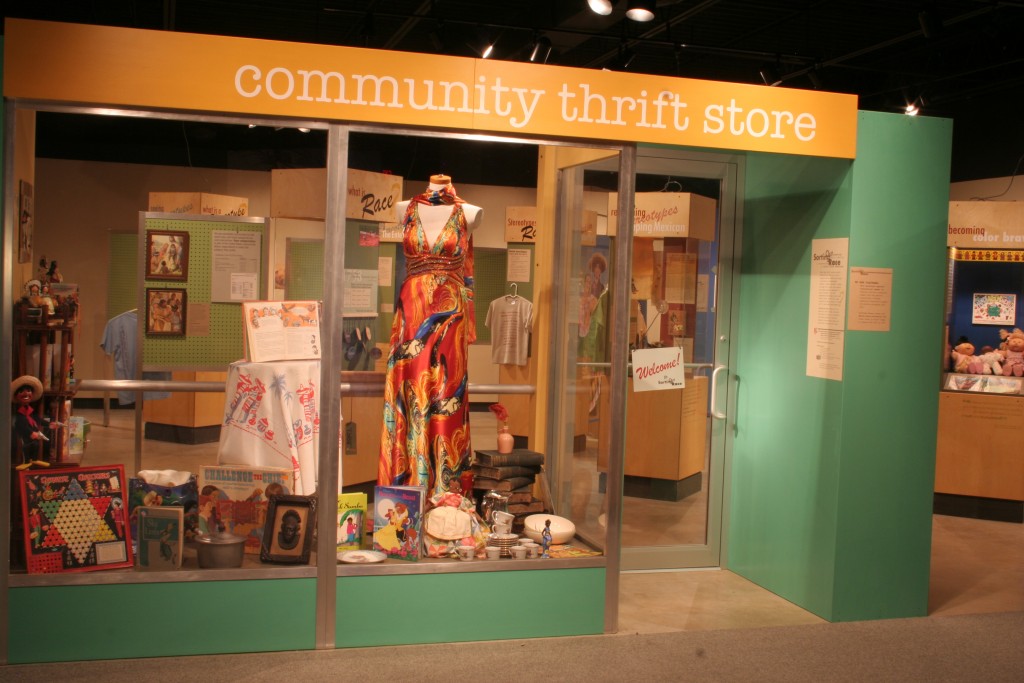Sorting Out Race: Examining Racial Identity and Stereotypes in Thrift Store Donations
Available Dates: November 1, 2015-November 1, 2020
Space Requirements: approximately 1,000 square feet
Contact: Annette LeZotte, alezotte@bethelks.edu or Chuck Regier crregier@bethelks.edu 316.283.1612
Exhibit Concept Every day thrift stores receive donations of items with racial imagery—antique advertising cards, collectible salt-and-pepper shakers, vintage children’s books, and mugs with sports team mascots. Are these harmless reminders of past attitudes or do they perpetuate stereotypes about race? Should thrift stores sell these objects? Or should they be “sorted out” of the resale environment? Sorting Out Race arose out of a desire to divert these artifacts from thrift stores to an exhibit that would generate a healthy community conversation about our continuing struggles with race.
Exhibit Content The entrance recreates a store window to immerse visitors in the thrift store environment. Modular cases and pegboard walls hold 130 thrift store donations that lead to key questions:
- What is race and how is racial identity shaped?
- What is a stereotype and what is a racial stereotype?
- What is racism and how do racial stereotypes perpetuate systems of dominance and privilege?
- Thrift store objects further demonstrate the persistence of racial stereotypes and their relation to levels of racism in American society:
- “Seeing Stereotypes” – pickaninny, Indian princess, servant/slave, savage warrior, the entertainer, advertising mascot.
- “Seeing Racism” – sports mascots, racial costuming, and white privilege.
- “If Collectibles Could Talk” – a new look at the Kansas state flag, a reproduction of an antique Perfect Flour advertising novelty, and a group of objects relating to the image of the black man as criminal.
- In “Reclaiming Stereotypes,” voices from people of color remake the social meanings of “mammy” and the “sleeping Mexican” and lead to a discussion of the role of these antiques and collectibles in people’s lives today.
- Visitors are invited to “share their voice”:
- What kinds of things would you be reluctant to give to a thrift store?
- Do these old things matter?
- Design a new name and logo for the Washington, DC football team.
- Design a new state flag for Kansas.
- Where do we go from here?
Additional Resources
Text, quotes, and images provide interpretation and raise provocative questions for viewers. The exhibit strives to create a welcoming place to share personal experiences even when surrounded by imagery ranging from insensitive banality, to hurtful disrespect, to the intensely offensive. Selected publications are provided as gallery resources. An online resource complements the exhibition with reference materials and a college curriculum. Exhibit hosts are encouraged to collaborate with local thrift stores, adding artifacts to reflect localized issues or concerns. PDFs of all the exhibit modules and interpretive texts are available for viewing at www.sortingoutrace.com.
Categories: General Announcement, Traveling Exhibitions

